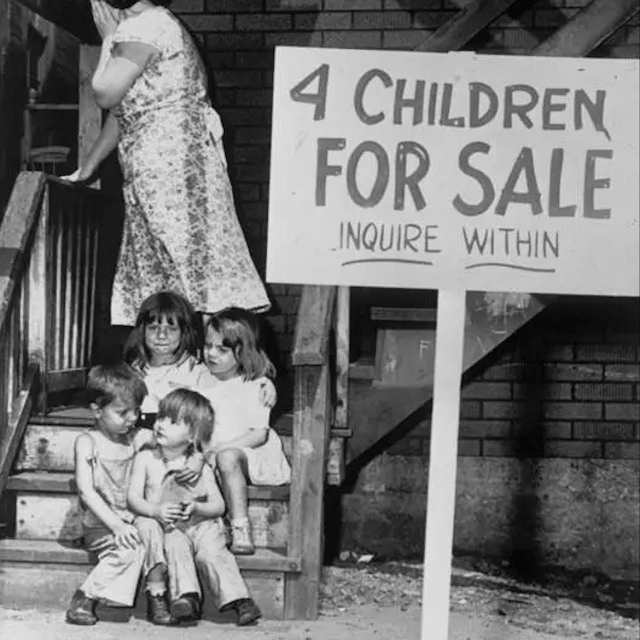THE TOWN of DeMotte is an hour’s drive from Chicago, and located in the state of Indiana. It is forty minutes from Lake Michigan, one of those giant lakes in the US that look like a full-blown sea. Walstra, Hamstra, Belstra, Ooms, Van Drunen, Drees – names on store windows, some in neon. No wonder, then, that every summer, in August, DeMotte hosts the Touch of Dutch Festival. Touch of Dutch? There are such touches there everywhere. Church sermons were still preached in Dutch as recently as in the previous century, and the name of the cemetery is Holland Cemetery.
Jan Zoeteman is buried there, next to his wife Ruth. He brought shame to the community when, more than a decade ago, newspapers across the country reported that shortly after World War II he had bought two young children. There was poverty in America, and just outside Chicago, a mother had offered her four children up for sale. Jan bought two, a 7-year-old girl (photo: middle step, right) for two dollars, and because her smaller brother began to cry inconsolably, he took the little boy too (bottom step, left), at no extra pay. The children were put to work as slaves on his farm in DeMotte.
IN AND BY itself, it is not surprising to find so many Dutch descendants in this part of America. The second wave of Dutch immigration in the mid-nineteenth century predominantly picked the Midwest as its settlement location. Partly because of a familiarity with the terrain, mostly flat, sometimes rolling, and in the case of Illinois and Michigan near water that looked enough like North and Wadden Sea. Close to God, too, in the Reformed hearts of many, because of the large areas of woods and fields, and sky domes reminiscent of Dutch expanses.
Remarkable, though, is that this cluster took root in Indiana, in a remote corner somewhat out of the way of where the Dutch would usually settle. Names like Jonkman, Penninga, Reverend Jelstra. Those endings -ga and -stra suggest where their ancestors came from, the northern Dutch provinces. Friesland, Groningen, along with Zeeland and the South Holland islands were where most emigrants at that time came from. That was where poverty prevailed and where the incentive was greatest for trying a completely new start-over. Zoeteman also hailed from South Holland.
WE DON’T KNOW much about him, except that he changed Jan to John, that he beat the little boy and chained him in the barn, on a ration of milk and peanut butter, and that both children worked long hours every day in the field. After a few years, the girl, Raeann, was kidnapped and raped; she became pregnant and disappeared from the Zoeteman farm. Her little brother, Milton, also ran away and ended up in psychiatric care.
In DeMotte, named for French Huguenots who migrated to Holland, Jan’s behavior did not immediately stand out. He had adopted the kids, Ruth and he said, and among immigrants you didn’t question what went on behind someone else’s front door. Not many neighbors in the 1950s thought Jan Zoeteman was out of line with his bought children and their forced labor.
All in all, after years of therapy, the two poor kids landed on their feet reasonably well, away from DeMotte. Raeann returned to the farm one more time, in 1993 when Jan was on his deathbed. He begged her for a hug. It was the only time his hand didn’t slap her across the face.




